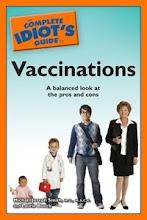Radio frequency identification (RFID) tags can track people, equipment, and paperwork in a variety of settings. They are currently used to track objects ranging from military equipment and nuclear materials to more mundane retail merchandise. These chips are either passive, transmitting a signal only when an electronic device requests information, or active, constantly transmitting a readable signal.
RFID tags are gaining traction in medicine. Surgeons can use "smart" sponges embedded with RFID tags in the operating room, for example. Separate devices can electronically count the number of sponges used and scan the surgical site to make sure none are left in the body, where they can cause pain, infections, and other problems. RFID-embedded identification bracelets placed on infants in maternity wards and linked to alarms prevent unauthorized people from taking the infants from the area.
Outside the hospital wards, RFID-tagged pharmaceutical containers make it easier for the FDA to track the drugs' movement (especially the movement of controlled substances such as the pain reliever OxyContin) and to verify that the drugs are not counterfeit. Some paper medical records have been RFID-tagged to help health care workers find misplaced files.
The Affordable Care Act encourages the use of technology such as electronic medical records and RFID tags to improve medical care and (not coincidentally) to stretch health care dollars by decreasing administrative costs and other expenses. Technology like RFID chips, which can prevent expensive and damaging human errors, should remain just one tool used by health care providers, and does not relieve them of their responsibility to provide the best care they can. Tools can help them with data collection and analysis, but empathy, observation, and insight remain distinctly human, and necessary for good health care as well.
Showing posts with label Health IT. Show all posts
Showing posts with label Health IT. Show all posts
Wednesday, April 13, 2011
Saturday, May 15, 2010
Health IT Hits a Wall
It's hard (for me, at least) not to click on the headline "Up to half of Spanish-translated prescriptions include dangerous mistakes" as a May 12 Fierce Healthcare post declared. The post cited a recent Pediatrics study that found that translation programs used by pharmacies to create Spanish-language instructions for patients were deeply flawed.
The Pediatrics study evaluated Spanish medicine labels from 209 pharmacies in the Bronx, New York; most of the pharmacies used computer programs to translate instructions for patients from English into Spanish. Half of the the translated labels used a mixture of Spanish and English, or had grammatical or spelling mistakes, resulting in "inconsistent and potentially hazardous" translations, according to the authors.
"Phrases that were not translated included 'dropperfuls,' 'apply topically,' 'for 7 days,' 'for 30 days,' 'apply to affected areas,' with juice,' 'take with food,' and 'once a day,'" the Pediatrics study's authors wrote. Mistranslated phrases included the substitution of "eleven times a day" for the phrase "once a day."
The move toward e-prescribing, electronic medical records, and other technological advances is supposed to make the practice of medicine safer and cheaper. The famous 1999 Institute of Medicine report, "To Err is Human: Building a Safer Health System" which found that up to 100,000 people die in hospitals each year from medical errors, helped shift the needle toward more standardization and digitization of medicine.
The Centers for Medicare and Medicaid (CMS) encourages the adoption of electronic medical records (EMR) and will soon provide financial incentives to health care providers who adopt them. In February, FierceHealthIT pointed out that "a healthy $20 billion in IT spending [from the stimulus bill]... will largely be funneled through CMS to provide incentives for EMR adoption."
All good, if you support health care reform and patient safety. But throwing technology at problems has its limitations, as the Pediatrics study makes clear. The study's authors suggested more regulation of and funding for better translation programs. Meanwhile, other unresolved IT issues, such as ensuring the electronic security of patients' health information, will continue to pose challenges for health IT for a long time to come.
The Pediatrics study evaluated Spanish medicine labels from 209 pharmacies in the Bronx, New York; most of the pharmacies used computer programs to translate instructions for patients from English into Spanish. Half of the the translated labels used a mixture of Spanish and English, or had grammatical or spelling mistakes, resulting in "inconsistent and potentially hazardous" translations, according to the authors.
"Phrases that were not translated included 'dropperfuls,' 'apply topically,' 'for 7 days,' 'for 30 days,' 'apply to affected areas,' with juice,' 'take with food,' and 'once a day,'" the Pediatrics study's authors wrote. Mistranslated phrases included the substitution of "eleven times a day" for the phrase "once a day."
The move toward e-prescribing, electronic medical records, and other technological advances is supposed to make the practice of medicine safer and cheaper. The famous 1999 Institute of Medicine report, "To Err is Human: Building a Safer Health System" which found that up to 100,000 people die in hospitals each year from medical errors, helped shift the needle toward more standardization and digitization of medicine.
The Centers for Medicare and Medicaid (CMS) encourages the adoption of electronic medical records (EMR) and will soon provide financial incentives to health care providers who adopt them. In February, FierceHealthIT pointed out that "a healthy $20 billion in IT spending [from the stimulus bill]... will largely be funneled through CMS to provide incentives for EMR adoption."
All good, if you support health care reform and patient safety. But throwing technology at problems has its limitations, as the Pediatrics study makes clear. The study's authors suggested more regulation of and funding for better translation programs. Meanwhile, other unresolved IT issues, such as ensuring the electronic security of patients' health information, will continue to pose challenges for health IT for a long time to come.
Subscribe to:
Posts (Atom)



